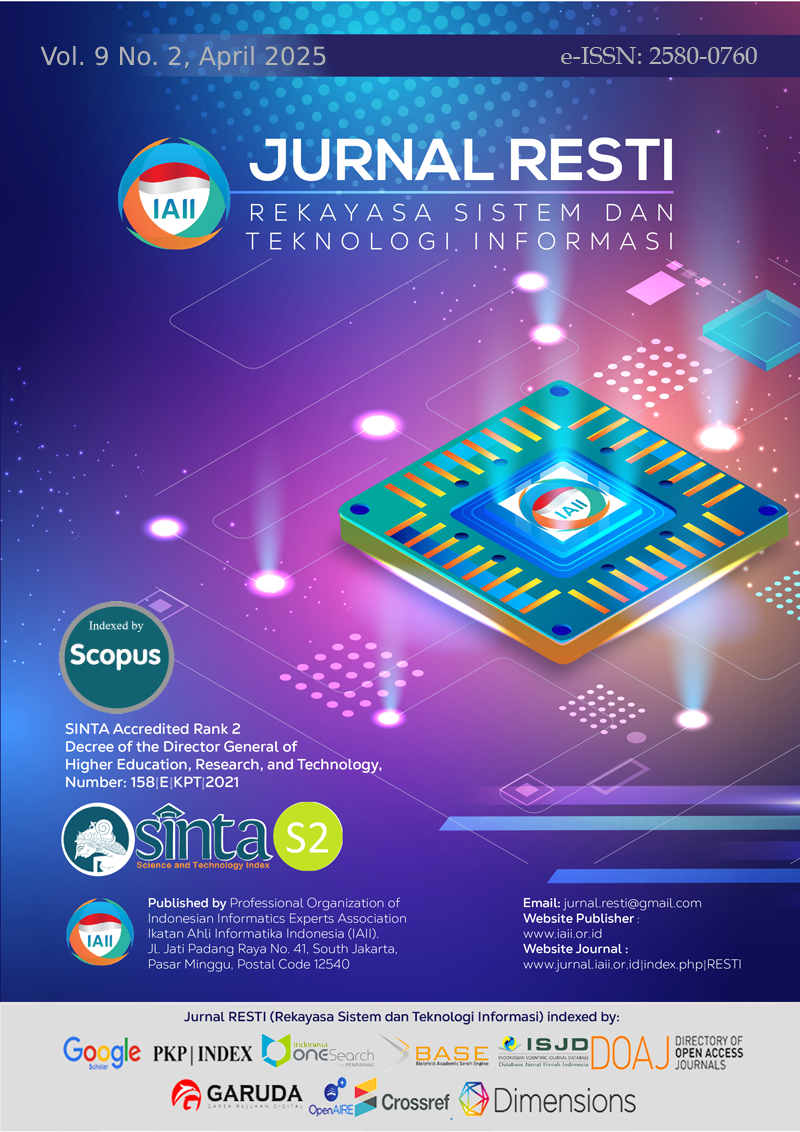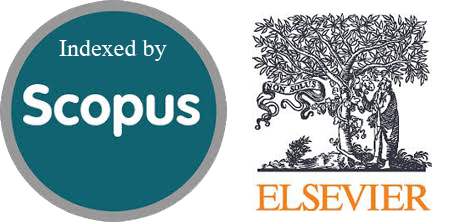Detecting Alzheimer's Based on MRI Medical Images by Using External Attention Transformer
Abstract
Alzheimer's disease is one of the major challenges in medical care this century, affecting millions of people worldwide. Alzheimer's damages neurons and connections in brain areas responsible for memory, language, reasoning, and social behavior. Early detection of this disease enables more effective treatment and proper care planning. Unfortunately, the traditional method of detecting Alzheimer's has several limitations, such as subjective analysis and delayed diagnosis. One commonly used method is visual inspection, which uses magnetic resonance imaging (MRI). The limitations of visual inspection include subjectivity and its time-consuming nature, especially with large or complex MRI datasets, making accurate interpretation a significant challenge. Therefore, an alternative for detecting Alzheimer’s disease is to use deep learning-based MRI image analysis. One promising approach is to implement the External Attention Transformer (EAT) model. It enhances image classification by using two shared external memories and an attention mechanism that filters out redundant information for improved performance and efficiency. The aim of this research is to evaluate and compare the performance of the baseline Convolutional Neural Network (CNN) model, the Vision Transformer (ViT) model, and the EAT model in detecting Alzheimer's using a dataset of 6400 brain MRI images. The EAT model outperforms the baseline CNN model and ViT model in detecting Alzheimer's, achieving its best results with an accuracy of 0.965 and an F1-score of 0.747 for the test data. Our results could be integrated with clinical analysis to assist in the faster diagnosis of Alzheimer's.
Downloads
References
K. G. Yiannopoulou and S. G. Papageorgiou, “Current and Future Treatments in Alzheimer Disease: An Update,” Journal of Central Nervous System Disease, vol. 12. pp. 1-12, 2020.
Z. Arvanitakis and D. A. Bennett, “What Is Dementia?,” JAMA, vol. 322, no. 17, p. 1728, 2019, doi: 10.1001/jama.2019.11653.
A. S. V. Prasad, “Physiological basis of memory dysfunction in Alzheimer’s disease–an overview,” International Journal of Biochemistry Research & Review, vol. 29, no. 2, pp. 9–24, 2020.
Alzheimer’s Association, “2023 Alzheimer’s disease facts and figures,” Alzheimer’s & Dementia, vol. 19, no. 4, pp. 1598–1695, 2023, doi: https://doi.org/10.1002/alz.13016.
A. P. R. Machado, I. O. Carvalho, and H. M. da Rocha Sobrinho, “Neuroinflamação na doença de Alzheimer,” Revista brasileira militar de ciências, vol. 6, no. 14, 2020.
J. M. Tublin, J. M. Adelstein, F. Del Monte, C. K. Combs, and L. E. Wold, “Getting to the heart of Alzheimer disease,” Circulation research, vol. 124, no. 1, pp. 142–149, 2019.
M. Calabrò, C. Rinaldi, G. Santoro, and C. Crisafulli, “The biological pathways of Alzheimer disease: A review,” AIMS neuroscience, vol. 8, no. 1, p. 86, 2021.
S. Afzal et al., "Alzheimer disease detection techniques and methods: A review," International Journal of Interactive Multimedia and Artificial Intelligence, vol. 6, no. 7, pp. 26–38, 2021, doi: https://doi.org/10.9781/ijimai.2021.04.005.
S. Hussain et al., "Modern diagnostic imaging technique applications and risk factors in the medical field: A review," Biomed Research International, vol. 2022, pp 1-12, 2022.
D. B. Plewes and W. Kucharczyk, “Physics of MRI: a primer,” Journal of magnetic resonance imaging, vol. 35, no. 5, pp. 1038–1054, 2012.
R. J. Lepping et al., “Quality control in resting-state fMRI: the benefits of visual inspection,” Frontiers in Neuroscience, vol. 17, pp. 1-9, 2023.
E.-G. Marwa, H. E.-D. Moustafa, F. Khalifa, H. Khater, and E. AbdElhalim, “An MRI-based deep learning approach for accurate detection of Alzheimer’s disease,” Alexandria Engineering Journal, vol. 63, pp. 211–221, 2023.
H. Ji, Z. Liu, W. Q. Yan, and R. Klette, “Early diagnosis of Alzheimer’s disease using deep learning,” in Proceedings of the 2nd international conference on control and computer vision, 2019, pp. 87–91.
A. Ebrahimi and S. Luo, “Convolutional neural networks for Alzheimer’s disease detection on MRI images,” Journal of Medical Imaging, vol. 8, no. 2, pp. 1-18, 2021.
H. A. Helaly, M. Badawy, and A. Y. Haikal, “Deep learning approach for early detection of Alzheimer’s disease,” Cognitive computation, vol. 14, no. 5, pp. 1711–1727, 2022.
L. Houria, N. Belkhamsa, A. Cherfa, and Y. Cherfa, “Multi-modality MRI for Alzheimer’s disease detection using deep learning,” Physical and Engineering Sciences in Medicine, vol. 45, no. 4, pp. 1043–1053, 2022.
G. M. Hoang, U.-H. Kim, and J. G. Kim, “Vision transformers for the prediction of mild cognitive impairment to Alzheimer’s disease progression using mid-sagittal sMRI,” Frontiers in Aging Neuroscience, vol. 15, pp. 1-11, 2023.
M.-H. Guo, Z.-N. Liu, T.-J. Mu, and S.-M. Hu, “Beyond self-attention: External attention using two linear layers for visual tasks,” IEEE Transactions on Pattern Analysis and Machine Intelligence, vol. 45, no. 5, pp. 5436–5447, 2022.
D. Singh and B. Singh, “Investigating the impact of data normalization on classification performance,” Applied Soft Computing, vol. 97, p. 105524, 2020, doi: https://doi.org/10.1016/j.asoc.2019.105524.
S. Yang et al., “Image data augmentation for deep learning: A survey,” arXiv preprint arXiv:2204.08610, 2022.
R. Yamashita, M. Nishio, R. K. G. Do, and K. Togashi, “Convolutional neural networks: an overview and application in radiology,” Insights into imaging, vol. 9, pp. 611–629, 2018.
A. W. Salehi, P. Baglat, B. B. Sharma, G. Gupta, and A. Upadhya, “A CNN model: earlier diagnosis and classification of Alzheimer disease using MRI,” presented at the 2020 International Conference on Smart Electronics and Communication (ICOSEC), IEEE, 2020, pp. 156–161.
Y. Bazi, L. Bashmal, M. M. A. Rahhal, R. A. Dayil, and N. A. Ajlan, “Vision transformers for remote sensing image classification,” Remote Sensing, vol. 13, no. 3, p. 516, 2021.
K. Han et al., “A survey on visual transformer,” arXiv preprint arXiv:2012.12556, 2020.
S. Hossain, M. Tanzim Reza, A. Chakrabarty, and Y. J. Jung, “Aggregating Different Scales of Attention on Feature Variants for Tomato Leaf Disease Diagnosis from Image Data: A Transformer Driven Study,” Sensors, vol. 23, no. 7, p. 3751, 2023.
H. Wang et al., “Mixed transformer u-net for medical image segmentation,” in ICASSP 2022-2022 IEEE international conference on acoustics, speech and signal processing (ICASSP), IEEE, 2022, pp. 2390–2394.
M. Grandini, E. Bagli, and G. Visani, “Metrics for multi-class classification: an overview,” arXiv preprint arXiv:2008.05756, 2020.
D. Chicco and G. Jurman, “The advantages of the Matthews correlation coefficient (MCC) over F1 score and accuracy in binary classification evaluation,” BMC genomics, vol. 21, pp. 1–13, 2020.
D. Chicco, M. J. Warrens, and G. Jurman, “The Matthews correlation coefficient (MCC) is more informative than Cohen’s Kappa and Brier score in binary classification assessment,” IEEE Access, vol. 9, pp. 78368–78381, 2021.
Copyright (c) 2025 Jurnal RESTI (Rekayasa Sistem dan Teknologi Informasi)

This work is licensed under a Creative Commons Attribution 4.0 International License.
Copyright in each article belongs to the author
- The author acknowledges that the RESTI Journal (System Engineering and Information Technology) is the first publisher to publish with a license Creative Commons Attribution 4.0 International License.
- Authors can enter writing separately, arrange the non-exclusive distribution of manuscripts that have been published in this journal into other versions (eg sent to the author's institutional repository, publication in a book, etc.), by acknowledging that the manuscript has been published for the first time in the RESTI (Rekayasa Sistem dan Teknologi Informasi) journal ;








